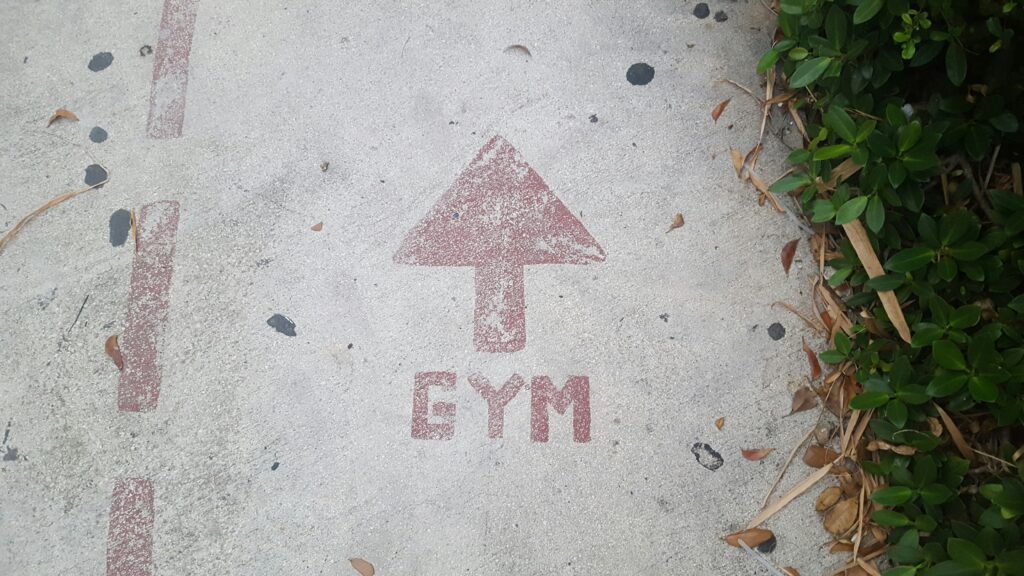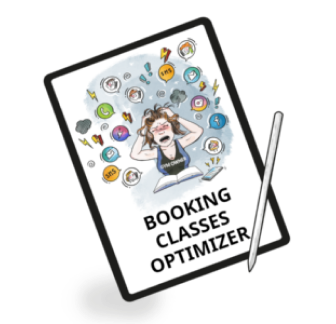Opening a gym (no matter if we mean buying a gym or building it from scratch) isn’t just about providing the best equipment and training programs; it also involves navigating a complex web of legal requirements.
These regulations can pose significant challenges, from ensuring proper safety protocols to complying with local zoning laws. Failing to adhere to these legal standards can result in hefty fines, lawsuits, or even the closure of your fitness facility.
To safeguard the success and reputation of your gym business, you need to understand and meet these legal obligations. This article will guide all gym owners through the key legal requirements for conducting a gym, helping you stay compliant and focused on what you do best: fostering a healthy, active community.
Key Takeaways
- Before you set up a gym, familiarize yourself with the legal regulations, check whether you can meet them and plan well, e.g. write a comprehensive gym business plan.
- Good gym software management can help you meet legal regulations, manage the staff and memberships.
- Legal regulations in establishing and running a gym do not only apply to staff, equipment and customer service. Also remember about gym advertisement and marketing, which is defined by law as well.

Step 1. Plan and Prepare
As in every aspect of business, including gym business, detailed planning of activities is necessary. By learning the legal requirements for your new fitness facility, you will have peace of mind and you won’t be surprised.

Step 1a. Define Your Gym Business
You need to know what type of gym business you want to run. Depending on this, different requirements and regulations will apply to you.
- Determine your target market and create a unique value proposition for your gym business. In our other article we present a broad list of gym types directed to future gym owners. If you are still wondering what kind of gym business would be the best with your skills, experience and market conditions – check it out
- Research the fitness industry and understand the competitive landscape. One of the features which can help you stand out from the crowd of gyms is the name of your fitness center. Here you can read a long list of cool gym names to get inspired.

Step 1b. Create a Business Plan
A business plan is not an officially required document unless you are applying for funding to open a business. However, it is always worth writing such a document because it organizes many threads and ideas and gives a specific shape to actions.
It is also a place that you can always come back to and implement step by step what you have previously planned. You can also decide to introduce changes to your marketing idea and update your business plan.
A gym business plan is a crucial document that outlines the planned activities, goals, and strategies for a new or existing gym, serving as an essential tool for anyone looking to start or expand their fitness business.
Why Write a Business Plan?
A business plan transforms your vision into a concrete action plan, moving you from dreaming to systematically developing your gym business. While running a business involves day-to-day operations, creating a business plan means working on the business itself, focusing on its design and improvement.
Benefits of a Gym Business Plan
- Verification of Assumptions: It allows you to verify your initial assumptions and track your progress over time, providing satisfaction as you see your knowledge and business grow.
- Action Plan: It translates your vision into a specific project and set of actions, helping you refine your business idea and assess its feasibility and potential for success.
- Reality Check: It helps you evaluate the practicality of your dream, assess implementation possibilities, gauge success chances, and understand the risks involved.
- Specificity and Risk Management: Writing a business plan forces you to be specific, highlighting areas where you may lack information, which is critical for minimizing risks.
- Ongoing Development: Even for existing gyms, a business plan is vital for outlining present and future actions, ensuring continuous improvement and strategic planning.
If you already run a gym and lack a business plan, it’s essential to create one to guide your present and future actions effectively.
If you want to know more about creating a business plan, skip to our other articles: Business plans with free downloadable templates!
Related Articles
Step 2. Implement the Best Gym Management Software for a Peace of Mind
How can gym management software help you meet the legal requirements?
There is no obligation to sign a contract with a member directly at the reception, but there is an obligation to send updated regulations, which you can do by e-mail directly from your gym membership management software.
If you are starting to run a gym, it is definitely worth introducing an IT system that facilitates many aspects of administration and customer service.
- varied payment options thanks to gym payment software.
- gym member management system
- gym CRM module
- gym integration with website, mobile app and showing your logo to the members and potential clients.
- Gym POS (point of sale)
- Gym staff management software
Legal requirements for gym owners in this case are easy to meet. You don’t have to worry about too much paperwork or too much responsibility.

The only legal requirements you will encounter when introducing gym management software is signing a contract with the SaaS supplier. The best software producers, such as WodGuru, always try to keep the contract short and concise.
What’s more, even in a topic as demanding as payments, there are no regulations that would impose any behavioral patterns on gym owners. With the payment provider of your choice, you can easily connect directly to gym software management without meeting additional legal conditions. The most common payment provider that conveniently connects to WodGuru is Stripe.
Step 3. Assure Licenses and Permits
Opening a gym in the United States requires obtaining various licenses and permits, which can vary by state and local jurisdiction. However, no matter what state you are in, you must:
- Obtain a business license to operate a gym in your state or locality
- Secure necessary permits, such as zoning permits and health department permits. Be qualified to lead fitness classes and require the same from your trainers. In our other article you can read more about how to become a fitness instructor.
- Check with your local government for specific requirements
Step 3 a. Obtain Necessary Licenses and Permits
Here are some of the common licenses and permits you may need:
- Business License: This is a basic requirement for operating any business in most states.
- Certificate of Occupancy (CO): This document confirms that your gym space meets building codes and zoning laws.
- Employer Identification Number (EIN): This is necessary for tax purposes and hiring employees.
- Sales Tax Permit: Required if you plan to sell taxable goods or services, such as merchandise or membership fees.
- Health and Safety Permits: Many states require gyms to pass safety inspections to ensure compliance with local building codes and fire safety regulations.
- Zoning Permit: Some locations may have specific zoning requirements for operating a gym in certain areas.
- Food and Retail Seller’s Permit: Necessary if you plan to sell food or retail items.
- Music License: If you plan to play music in your gym, you may need a license to comply with copyright laws.
- CCTV License: If you use security cameras, some jurisdictions require a specific license.

It’s important to note that requirements can vary significantly between states and even between local jurisdictions within states. For example, California may have different requirements than Texas, and New York City may have additional requirements compared to other parts of New York State.
To ensure compliance, it’s recommended to:
- Check with your state’s department of commerce or revenue for specific business license requirements.
- Contact your local city hall or county clerk’s office for information on local permits and zoning regulations.
- Consult with the U.S. Small Business Administration for any federal regulations that may apply to your gym.
- Consider seeking legal advice to ensure you’ve covered all necessary licenses and permits for your specific location and type of gym.
Remember, obtaining the proper licenses and permits is inevitable for operating legally and avoiding potential fines or legal issues in the future.
Step 3 b. Obtain Specialized Licenses and Permits
Specialized licenses and permits for opening a gym in the United States are those that are required for specific services or features beyond the standard business operations.
- Obtain certifications for personal trainers and group fitness instructors
- Consider obtaining specialized licenses, such as a nutrition counseling license
- Research any additional permits required for specific services, such as childcare or food services

- Professional Licenses for Staff: Depending on the services you wish to offer in your own gym, you may need licenses for personal trainers, massage therapists, or other specialized staff.
- Child Care License: If the gym offers childcare services, a specific license is required to ensure compliance with state regulations regarding the care and safety of children (not only for the fitness industry).
- Food and Retail Seller’s Permits: Necessary if the gym plans to sell food, beverages, or other retail items. This often includes passing health inspections and obtaining a food vendor’s license.
- Spa and Massage Permits and Licenses: Required for gyms offering spa services or massage therapy. These services often need additional permits and adherence to state-specific regulations for massage therapists and estheticians.
- Licenses for Healthcare Services: If the gym employs or rents space to healthcare providers like dieticians or physical therapists, it must ensure that these professionals have the necessary certifications and licenses.
- Pool and Shower Regulations: Specific permits are required for gyms with pools or shower facilities, which must comply with local health and safety regulations. Some states have specific permitting requirements for businesses with pools or shower facilities.
Step 4. Ensure the Daily Operation of the Gym is Legal and Safe
In the fitness industry, like in other types of business, all elements that make up the company must be safe and compliant with the law.
In the case of gym it will be:
- properly educated staff, employed on the basis of correct contracts,
- fitness equipment compliant with standards and undergoing regular maintenance,
- contracts with clients, regulations for participation in classes,
- other cooperation, specified by contracts, e.g. between the gym and the gym manager software supplier.
Step 4 a. Hire and Train Your Staff
By adhering to legal requirements connected with hiring and training staff, gym owners can create a safe environment for clients, protect their business from potential legal issues, and maintain professional standards in the fitness industry.

Here are the key legal requirements in the USA for hiring and training gym staff:
Certifications:
- CPR/AED Certification: This is a critical requirement for gym staff, especially personal trainers, to ensure they can handle emergencies effectively.
- Personal Trainer Certifications: Staff providing fitness instruction should have relevant certifications from accredited organizations.
Background Checks:
Conducting comprehensive background checks on potential gym staff members is crucial for ensuring safety and maintaining the gym’s reputation.
This may include criminal record checks, verification of certifications and qualifications, and employment/educational history verification.
Liability Insurance:
Gyms should have liability insurance to protect against accidents and injuries that occur on the premises.
Personal trainers specifically should have professional liability insurance and general liability insurance.
Licenses and Permits:
Depending on the state and local regulations, specific licenses may be required for personal trainers or other specialized staff.
Business licenses and permits may be needed depending on where training sessions are conducted (e.g., gym, client’s home, public parks).
Training Programs:
Implementing a comprehensive training program for new gym staff is essential.
This should cover the gym’s mission and values, standard operating procedures, equipment usage and safety protocols, service offerings, customer service skills, and conflict resolution strategies.
Legal Compliance:
Ensure staff adhere to scope of practice and ethical guidelines, including maintaining confidentiality, honest advertising practices, and non-discrimination.

Informed Consent and Liability Waivers:
Gyms should have proper documentation, including informed consent forms and liability waivers, for clients to sign before beginning training sessions.
Nutrition and Supplement Advice:
If staff provide nutrition advice, ensure they stay within legal boundaries and their scope of practice. Consider additional certifications for providing nutritional advice.
Employment Laws:
Comply with federal and state employment laws regarding hiring practices, wages, working hours, and employee rights.
Safety Regulations:
Ensure staff are trained on and comply with safety regulations and local building codes.
Step 4 b. Assure Compliant Gym Equipment and Supplies
- Purchase or lease gym equipment, including cardio machines and strength training equipment
- Source high-quality gym supplies, such as towels and cleaning products
- Consider energy-efficient and eco-friendly options
But here are the details you should pay attention to:
- Americans with Disabilities Act (ADA) Compliance: Gyms must provide equipment that is accessible to people with disabilities. This includes having ADA-compliant exercise machines and therapy equipment that adhere to the standards established by the ADA of 1990.
- Safety Standards: Fitness equipment must meet international safety standards and specific requirements of the destination market. This includes compliance with product safety, electrical components, and environmental issues.
- FDA Regulations: The Food and Drug Administration (FDA) regulates exercise equipment if it is intended for medical purposes, such as redeveloping muscles, restoring joint motion, or as an adjunct treatment for obesity. Equipment intended only for general physical conditioning or athletic development does not require FDA regulation.

- Premarket Notification: For medical-use exercise equipment, manufacturers may need to submit a premarket notification (510(k)) to the FDA. This involves providing detailed information about the device, including its description, materials, labeling, and performance data.
- Electrical and Electronic Standards: Fitness equipment with electrical components must comply with relevant electrical safety standards.
- Chemical Safety: Equipment must pass chemical tests to ensure the safety of materials used in their construction.
- Performance Testing: Fitness products must undergo various mechanical, electrical, and chemical tests to ensure their safety, quality, and performance.
- Labeling Requirements: Proper labeling is required, including any necessary warnings, usage instructions, and, for medical devices, specific prescription statements as per FDA regulations.
- Certification: While not always legally required, certification from recognized bodies can demonstrate compliance with quality and safety standards.
- Hazard Analysis: Manufacturers should conduct and provide a hazards analysis for new devices, identifying safety features.
Step 4 c. Buy Gym Insurance and Implement Risk Management
Here are some key details about gym insurance and implementing risk management for gyms.
Types of Insurance Coverage:
- General Liability Insurance: Covers basic third-party risks like slip-and-fall injuries. Typically costs $500-$2000 per year.
- Professional Liability Insurance: Protects against claims of errors or omissions in professional services provided.
- Property Insurance: Covers damage to gym equipment and facilities.
- Workers’ Compensation Insurance: Required in most states to cover employee injuries. Can provide up to $500,000 in coverage.
- Cyber Insurance: Protects against data breaches and theft of member information.
- Equipment Breakdown Coverage: Covers repair/replacement of damaged gym equipment.
Implementing Risk Management:
- Conduct regular safety inspections of facilities and equipment.
- Provide proper training for staff on equipment use and safety protocols.
- Have members sign liability waivers before using facilities.
- Maintain clean, well-lit spaces to prevent slip-and-fall accidents.
- Implement data security measures to protect member information.
- Create emergency response plans for injuries or medical events.
- Keep detailed maintenance and inspection records.
Step 5. Take into Account Legal Requirements and Compliance
As a gym owner, you must be aware of various legal guidelines and implement them. Ignorance of the law does not exempt you from the obligation to run a safe and legal gym. Thanks to knowledge, you will avoid fines and sleep soundly.
Step 5 a. Understand Gym Legal Requirements
- Familiarize yourself with local, state, and federal laws governing gym operations.
- Understand employment laws and regulations, including worker’s compensation and unemployment insurance.
- Research any specific laws governing the fitness industry, such as laws related to personal training and nutrition counseling.

Step 5 b. Ensure Legal Compliance
- Regularly review and update your business plan and policies to ensure compliance with changing laws and regulations.
- Conduct regular audits to ensure compliance with employment laws and regulations.
- Establish a system for reporting and addressing incidents and complaints.

Step 6. Think About Additional Considerations for Gym Owners
Legal issues are a huge topic. In addition to the regulations mentioned above, also take into account rules which are specific to the fitness industry.
Step 6 a. Count the Costs

Take into account all the costs of running a gym so that nothing surprises you. Examples of costs you cannot forget about:
Business License Cost: The cost for obtaining a business license to open a gym varies but generally does not exceed a few hundred dollars (Amelia WordPress Booking Plugin) (Gym Management Software).
Zoning Permits: The cost for zoning permits can range from $100 to $1,000, depending on the location and specific local requirements (FitBiz) (Gym Management Software).
Insurance Coverage: Comprehensive insurance for a gym, including liability, property, and workers’ compensation, can range from $500 to $2,000 per year (FitBiz) (Gym Management Software).
Liability Waivers: Professionally drafted liability waivers, which are crucial for protecting the gym from lawsuits, can cost between $200 and $1,000 (FitBiz).
Health Studio Registration: In states like California, a Health Studio Registration costs approximately $100 annually (FitBiz).
Certificate of Occupancy: Obtaining a certificate of occupancy typically costs between $100 and $250, ensuring the facility meets local building codes and zoning requirements (Gym Management Software) (Amelia WordPress Booking Plugin).
Annual Certification of Compliance: In California, this certification from Cal/OSHA costs around $250 annually (FitBiz).
Employee Documentation Compliance: Ensuring compliance with employment laws, including verifying work eligibility and adhering to labor standards, can involve initial legal consultation costs ranging from $500 to $1,500 (FitBiz).
Training Certifications: The cost for trainers to obtain certifications from recognized institutions can range from $300 to $1,000 per certification (Gym Management Software) (FitBiz).
Legal Consultation: Initial legal consultation for drafting necessary documents like contracts and waivers can cost between $1,000 and $3,000 (FitBiz).
If you are curious about how much money is needed to start a fitness business in a given area, read our other articles:
Step 6 b. Plan Your Marketing and Advertising

- Develop a marketing plan, including social media, online advertising, and local promotions.
- Create a brand identity, including a logo and website.
- Consider partnering with local businesses and organizations to promote your gym.
Check out our other texts on marketing strategy, costs and ideas:
Remember that advertising and marketing are also subject to the law! There are regulations governing specific advertising practices such as telemarketing, email marketing, and environmental claims.
Advertisers must ensure compliance with both federal and state laws, as requirements can vary by jurisdiction. Failure to comply can result in legal action, fines, and damage to a company’s reputation.
- Federal Trade Commission Act (FTC Act): Requires advertising to be truthful and non-deceptive; Prohibits unfair advertisements; Mandates that advertisers must have evidence to back up their claims.
- Lanham Trademark Act: Allows for claims of false advertising.
- Federal Communications Commission (FCC) regulations: Governs broadcast advertising; Requires disclosure of sponsored content.
- Food, Drug, and Cosmetic Act (FD&C Act): Regulates advertising for food, drugs, and cosmetics.
- Children’s Online Privacy Protection Act (COPPA): Restricts collection of personal information from children in online advertising.
- State-specific laws: Many states have their own consumer protection and false advertising laws.
Step 6 c. Build a Loyal Gym Community
- Develop a member engagement strategy, including regular communication and feedback opportunities
- Offer loyalty programs and rewards for frequent members
- Consider hosting events and workshops to build a sense of community among members
FAQ
Most gyms require a standard business license to operate. You’ll need to check with your state’s department of commerce or revenue for specific requirements.
Generally, there are no federal licenses required for standard gyms. However, it’s advisable to check with the U.S. Small Business Bureau for any federally regulated activities.
Yes, license and permit requirements for gyms can vary significantly by state. Each state may have its own definition and categorization for gyms or fitness centers.
Yes, additional permits may be required for services like:
- Childcare facilities
- Food and retail sales
- Spa and massage services
- Healthcare services
- Pools and shower facilities





